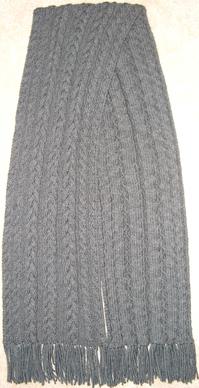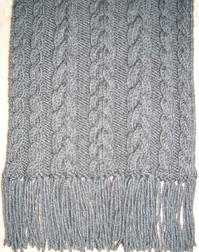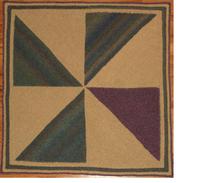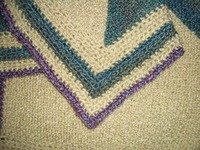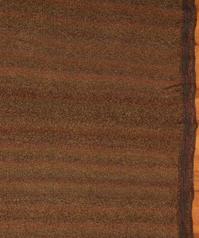Another month, roughly, and I've finished massaging my manuscript into something I'm willing to show to outsiders. I made two passes during which I:
Completed neglected research
When I write, I use square brackets to indicate a place where I need to look something up. If I looked things up and did research while I was writing, I'd never finish. I did do a bunch of research during, but only when I was procrastinating. I usually had an idea of what I needed to say in the space, but didn't want to take the time to make sure it was precise and completely correct. Often, my first reader had some idea, and would make a note for me while he was reading.
Made the beginning match the end
As I wrote, I didn't go back and edit previous parts, even when I made changes that caused things closer to the beginning to change. Instead, I made a note on that day's printout and wrote subsequent days as if the change had always existed. This way, I didn't get bogged down in recursive edits. In the end, I think it worked well, since it didn't take too long to fix the problems in the beginning and I know it would have cost me more time doing it the other way.
Edited for consistency
I read the entire thing, beginning to end, making sure that whenever I specified an event in a character's life, all of the references were to the same time. I read for other problems, too, like the locations of various characters' apartments, etc. Just a general read for consistency. Not too many problems here, probably because I caught a lot of them in the previous read-through, for the research. I also extended the last scene because I'd ended it too abruptly just to be done.
Fact-checked
What it sounds like. Made sure that if I mentioned a product or a service it could reasonably exist. When I mentioned real-world products, I double-checked prices, editions, models, years available, etc.
Omitted needless words
This was so interesting that I'm going to post about it separately.
Placed chapter breaks
I planned and wrote the novel in scenes, not chapters, though often I had an idea of where the breaks would go. Scene A and Scene B needed a chapter break in between, and I wrote it that way. For other breaks, I wasn't so sure and did it on the fly as I read. My first reader confirmed that they seemed to be in good places, but he was already familiar with the material.
Formatted like a manuscript
Surprisingly, this was the hardest part. My novel has numbered chapters divided into parts with location section headings. It was very hard to find a reference describing how to format those headings. I eventually came upon Anne Mini's blog, where I asked her questions about formatting. It seems that #s for blank lines are passe. And those section headings should be bolded. Even if this isn't the most correct format, it's unobtrusive. The format shouldn't annoy anyone enough that they ignore the words.
Now my manuscript is with my second readers (two friends about my age, one male, one female, my mother and one of her female friends, and my grandmother). I wanted a good range of techno-savvy and ages, and I think I got that. I'm waiting to hear what they think of the plot and characters and whatever grammar problems or typos there may be.
Waiting is hard, so I'm plotting the second book in the series.
Completed neglected research
When I write, I use square brackets to indicate a place where I need to look something up. If I looked things up and did research while I was writing, I'd never finish. I did do a bunch of research during, but only when I was procrastinating. I usually had an idea of what I needed to say in the space, but didn't want to take the time to make sure it was precise and completely correct. Often, my first reader had some idea, and would make a note for me while he was reading.
Made the beginning match the end
As I wrote, I didn't go back and edit previous parts, even when I made changes that caused things closer to the beginning to change. Instead, I made a note on that day's printout and wrote subsequent days as if the change had always existed. This way, I didn't get bogged down in recursive edits. In the end, I think it worked well, since it didn't take too long to fix the problems in the beginning and I know it would have cost me more time doing it the other way.
Edited for consistency
I read the entire thing, beginning to end, making sure that whenever I specified an event in a character's life, all of the references were to the same time. I read for other problems, too, like the locations of various characters' apartments, etc. Just a general read for consistency. Not too many problems here, probably because I caught a lot of them in the previous read-through, for the research. I also extended the last scene because I'd ended it too abruptly just to be done.
Fact-checked
What it sounds like. Made sure that if I mentioned a product or a service it could reasonably exist. When I mentioned real-world products, I double-checked prices, editions, models, years available, etc.
Omitted needless words
This was so interesting that I'm going to post about it separately.
Placed chapter breaks
I planned and wrote the novel in scenes, not chapters, though often I had an idea of where the breaks would go. Scene A and Scene B needed a chapter break in between, and I wrote it that way. For other breaks, I wasn't so sure and did it on the fly as I read. My first reader confirmed that they seemed to be in good places, but he was already familiar with the material.
Formatted like a manuscript
Surprisingly, this was the hardest part. My novel has numbered chapters divided into parts with location section headings. It was very hard to find a reference describing how to format those headings. I eventually came upon Anne Mini's blog, where I asked her questions about formatting. It seems that #s for blank lines are passe. And those section headings should be bolded. Even if this isn't the most correct format, it's unobtrusive. The format shouldn't annoy anyone enough that they ignore the words.
Now my manuscript is with my second readers (two friends about my age, one male, one female, my mother and one of her female friends, and my grandmother). I wanted a good range of techno-savvy and ages, and I think I got that. I'm waiting to hear what they think of the plot and characters and whatever grammar problems or typos there may be.
Waiting is hard, so I'm plotting the second book in the series.
